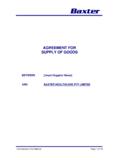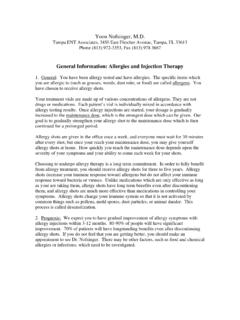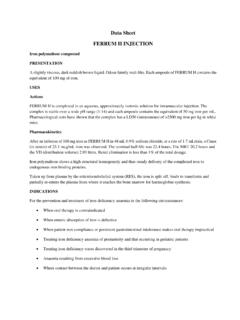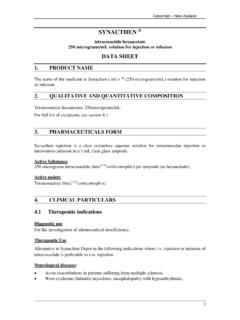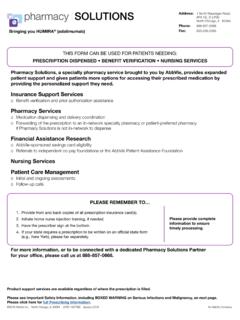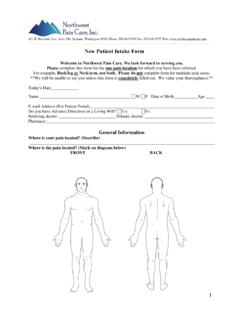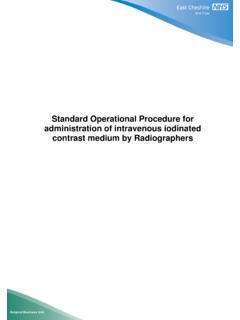Transcription of Name of the medicine - Baxter Healthcare
1 CERNEVIT Product information name of the medicine CERNEVIT. CERNEVIT is a multivitamin preparation, lyophilised, sterile powder, for reconstitution in 5 mL. of Water for injection or other compatible parenteral fluids. Composition Content of lyophilisate in each vial Active Ingredients Qty Corresponding to Qty Retinol (present as 3500 IU Vitamin A 3500 IU. retinyl palmitate). Cholecalciferol g Vitamin D3 g dl- -tocopherol mg Alpha tocopherol (Vitamin E) IU. Ascorbic acid 125 mg Vitamin C 125 mg Cocarboxylase tetrahydrate mg Thiamine (Vitamin B1) mg Riboflavine sodium phosphate mg Riboflavine (Vitamin B2) mg Pyridoxine hydrochloride mg Pyridoxine (Vitamin B6) mg Cyanocobalamin 6 g Vitamin B12 6 g Folic acid 414 g Folic acid (Vitamin B9) 414 g Dexpanthenol mg Dexpanthenoic acid (Vitamin B5) mg d-Biotin 69 g Biotin (Vitamin B7) 69 g Nicotinamide mg Niacin (Vitamin PP/B3) 46 mg Excipients Glycine 250 mg, Glycocholic acid 140 mg, Lecithin mg,(Lecithin [Soybean].)
2 Mg), Sodium hydroxide 10% qs and/or, 1 M hydrochloric acid qs pH The active ingredients in CERNEVIT are water-soluble and fat-soluble vitamins, which are well characterised. The Glycine component is included in the formulation as an excipient in order to facilitate the reconstitution of the lyophilised product with Water for injection . CERNEVIT PI ccsi42720151030 07 Jan2016 Page 1 of 12. Baxter CERNEVIT Product information Description CERNEVIT is a sterile dosage form for injection containing nine water-soluble and three fat- soluble vitamins (Vitamin K is not included in Cernevit), using mixed micelles (glycocholic acid and lecithin) as a solubilising agent. It is presented as a lyophilised, orange-yellow, sterile powder. That is to be reconstituted with 5mL of Water for Injections or other parenteral fluids, ( as Sodium chloride, 5% Glucose or nutritional mixtures), prior to administration by parenteral route.
3 Pharmacology A general mode of action of CERNEVIT is to provide a balanced physiological effect mediated by the water-soluble and fat-soluble vitamins in adults and children. Composition and proportion of each vitamin correspond to the recommendations of the American Medical Association, Food and Drug Administration and Food and Nutrition Board in parenteral nutrition. Pharmacodynamics Each vitamin has its specific function in regulating metabolic process in living cells. As CERNEVIT contains more than one active ingredient, it has multifactorial physiological effects. Some functions are performed by one vitamin, such as vitamin A, which is necessary for proper functioning of the retina and the integrity of epithelial cells. Insufficient retinol (Vitamin A). supplies for the formation of rhodopsin lead to a night blindness syndrome.
4 Other fat-soluble vitamins (Vitamin D and E) are involved in different functions. That is, Vitamin E preserves the essential cell constituents by virtue of its anti-oxidant property, whilst Vitamin D exerts its physiological effect via a hormone-like mode of action on bone formation and mineral homeostasis. An excess intake of fat-soluble vitamins, such as Vitamin A, may lead to a toxic effect because of its accumulation in the body. This is caused by a slow metabolism and excretion of this vitamin. More than 90% of Vitamin A body supply is stored in the liver and this reserve is usually sufficient for several months to a year. Thus, frequent replacement of Vitamin A is not needed, in contrast to water-soluble vitamins (Vitamin B-complex and Vitamin C), which require a continuous replacement due to their fast excretion from the body.
5 Water-soluble vitamins act as co-enzymes, mainly in energy metabolism. The B-complex vitamins are necessary for conversion of carbohydrate, protein and fat into tissue and energy. That is, biotin and niacin function as a component of carboxylase enzymes in those metabolic reactions, whilst Vitamin C is involved in collagen formation and tissue repair. Tetrahydrofolic acid, the co-enzyme form of the vitamin, serves as an acceptor and a donor of one carbon unit in amino acid and nucleotide metabolism. Excess intake of water-soluble vitamins is excreted readily by the kidney in the urine by virtue of a high solubility of the parent and their metabolites in water, thereby accumulations rarely take place. Thus, toxicity is less often experienced with water-soluble vitamins than with fat-soluble vitamins. CERNEVIT PI ccsi42720151030 07 Jan2016 Page 2 of 12.
6 Baxter CERNEVIT Product information Pharmacokinetics The mode of administration of CERNEVIT is by injectable route, thus the bioavailability of this product is considered 100% as it is directly provided into systemic circulation. Indications CERNEVIT is indicated in adults and children over 11 years of age requiring parenteral multi- vitamins supplementation to correct or prevent vitamin deficiencies when oral administration is contraindicated, impossible or insufficient. This product does not contain vitamin K, which may be given separately if required. Contraindications CERNEVIT is contraindicated in patients with pre-existing hypervitaminosis or known hypersensitivity to CERNEVIT, to any of the active ingredients, or soy/protein products in particular patients with hypersensitivity to thiamine (Vitamin B1). Thus, CERNEVIT should not be injected to patients with pre-existing intolerance to thiamine.
7 Similarly, this product should not be administered to patients with impaired hepatic function. Cernevit should not be administered to those suffering from hyperparathyroidism due to hypercalcemic complications. Precautions Allergic reactions Anaphylactic reactions may occur in allergic subjects who are susceptible to thiamine (Vitamin B1) and nicotinamide components of this product. Mild allergic reactions such as sneezing or mild asthma are warning signs that further injection may give rise to anaphylactic shock. In some cases, the manifestations of a hypersensitivity reaction during intravenous administration of multivitamins may be rate related. The infusion or injection must be stopped immediately if signs or symptoms of a hypersensitivity reaction develop. Cernevit contains soy-derived lecithin and should be used with caution in patients with peanut allergies due to potential cross-reactivity.
8 Vitamin toxicity The patients's clinical status and blood vitamin concentrations should be monitored to avoid overdose and toxic effects, especially with vitamins A,D and E, and in particular in patients who receive additional vitamins from other sources or use other agents that increase the risk of vitamin toxicity. Monitoring is particularly important in patients receiving long-term supplementation. Daily vitamin requirements must be calculated in order to avoid overdose and toxic effects, in particular with fat soluble vitamins, such as Vitamin A. Caution should be exercised when CERNEVIT PI ccsi42720151030 07 Jan2016 Page 3 of 12. Baxter CERNEVIT Product information administering CERNEVIT to patients who may be receiving Vitamin A from other sources. The recommended Dietary Intakes (RDI) of Vitamin A in pregnant and lactating women as recommended by the NH&MRC is 2500 IU (750 mcg retinol equivalents).
9 CERNEVIT IV. contains 3500 IU vitamin A, administered by intravenous route, thus the use of this product in pregnant or lactating women is not recommended. Teratogenic effects have been observed in isolated cases with a dose vitamin A over 10,000 IU per day. The risk for hypervitaminosis A and vitamin A toxicity ( , skin and bone abnormalities, diplopia, cirrhosis) is increased in, for example: patients with protein malnutrition, patients with renal impairment (even in the absence of vitamin A supplementation), patients with small body size ( , pediatric patients), and patients on chronic therapy. Caution should be exercised when administering CERNEVIT to patients who may be receiving Vitamin A, D and E from other sources and those receiving long-term supplementation. Refeeding syndrome Refeeding severely undernourished patients may result in refeeding syndrome that is characterised by the shift of potassium, phosphorus, and magnesium intracellularly as the patient becomes anabolic.
10 Thiamine deficiency and fluid retention may also develop. Careful monitoring and slowly increasing nutrient intakes while avoiding overfeeding can prevent these complications. Precipitates Pulmonary vascular precipitates have been reported in patients receiving parenteral nutrition. In some cases, fatal outcomes have occurred. Excessive addition of calcium and phosphate increases the risk of the formation of calcium phosphate precipitates. Precipitates have been reported even in the absence of phosphate salt in the solution. Precipitation distal to the in-line filter and suspected precipitate formation in the bloodstream have also been reported. In addition to inspection of the solution, the infusion set and catheter should also periodically be checked for precipitates. If signs of pulmonary distress occur, the infusion should be stopped and medical evaluation initiated.
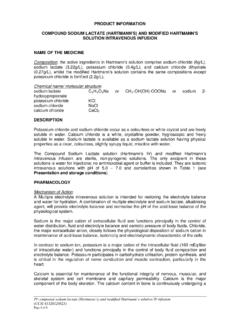
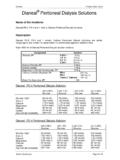
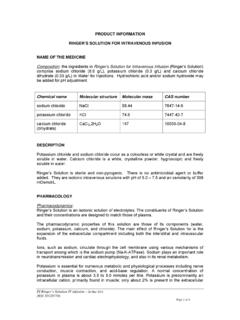
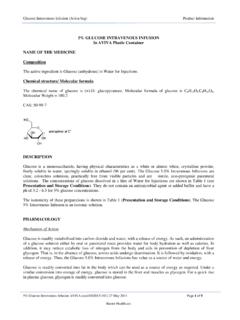
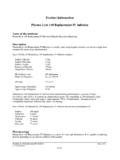
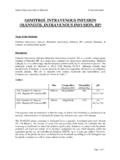
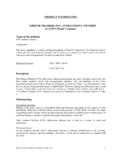
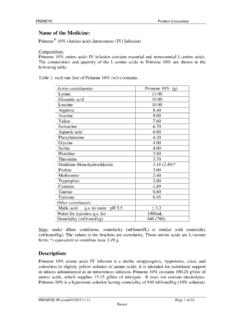
![T I S S E E L [Fibrin Sealant] - Baxter Healthcare](/cache/preview/5/e/c/8/3/b/b/2/thumb-5ec83bb2d349410260af6c556ae67fe3.jpg)
